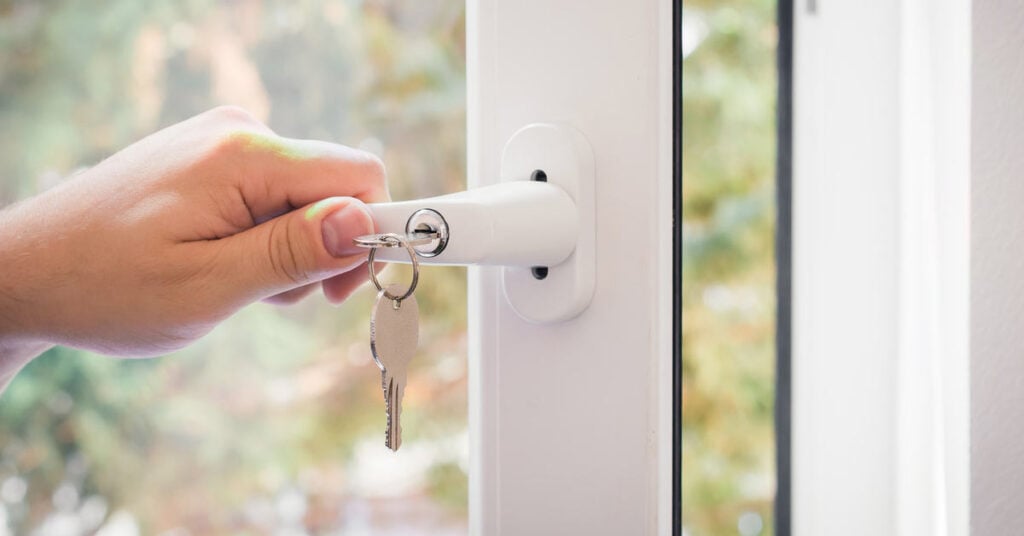Buying a home is a scary thing, especially if it’s your first time. However, the answer to whether a home warranty is worth it depends on several factors that are unique to an individual homeowner’s situation, whether it’s your first house or third.
Key Considerations
1. How old is my home and its appliances?
2. Am I able to cover the financial implications of having a warranty or not?
3. Did I look into the fine script?
For instance, let’s say you’re buying an older home with used and worn appliances, then the prospect of something going wrong is a real possibility. This is where a home warranty comes into play to potentially save you some money on repair or replacement costs for systems that were already likely to fail. However, this may not be helpful for those with newer and more updated housing and appliances. The peace of mind a warranty can provide you can only go so far. There are many Reddit threads debating this very question. Oftentimes the limitations and exclusions can result in steep out-of-pocket costs and wait times that make it completely unworth it, where others have found warranties financially protective in situations such that necessitated replacements specifically.
Overall, it’s important that you thoroughly assess your financial ability to handle unexpected repairs as well as understand the coverage, exclusions, and the provider’s reliability before making a purchase. A home warranty could be either an essential safeguard or an unnecessary expense depending on individual circumstances.

What Does a Home Warranty Cover?
Home warranties provide a safety net for homeowners by covering the costs associated with repairing or replacing key home systems and appliances that break down due to normal wear and tear. The scope of coverage typically includes major household systems and everyday appliances including the following:
- Major appliances such as refrigerators, dishwashers, ovens, and washers/dryers
- Home systems including HVAC (heating, ventilation, and air conditioning), electrical systems, and plumbing
- Water heaters
- Garbage disposals
- Built-in microwaves
- Optional coverage for pools, spas, well pumps, and septic systems (often for an additional fee)
Coverage specifics can vary widely among providers, so be sure to review what’s included in their contract carefully. Note that certain items that might require additional coverage, such as refrigerators or washers and dryers, are often covered under more comprehensive plans or available as optional add-ons.
Unlike home insurance, which protects against damages on the outside of your home from events like fires, storms, theft, natural disasters, or catastrophic events, home warranties cover the cost of repairing or replacing major systems and appliances inside your home that occur from aging or normal usage, such as an HVAC system. This distinction is key as it impacts the type of financial protection you are purchasing. Home insurance is generally required by mortgage lenders, while a home warranty is optional and acts more like a maintenance agreement to help manage the costs of upkeeping a home.
Home warranty companies typically offer various plans to cater to different needs and budgets. Basic plans usually cover most major appliances and systems, while comprehensive plans might include additional items like pools, spas, and even ceiling fans as listed above. Additionally, some companies offer customizable plans where homeowners can select specific systems or appliances to include, ensuring they only pay for the coverage they need which we will discuss more later on. This flexibility allows homeowners to tailor their contracts to their specific circumstances, potentially saving money and enhancing the value they receive from their warranty.
Pros of Having a Home Warranty
One of the primary advantages of having a home warranty is the convenience it offers. When a covered system or appliance breaks down, the homeowner simply contacts the warranty provider, who then arranges for a local contractor to assess and fix the problem. This streamlined process eliminates the need for you to search for and vet service technicians during those stressful times, simplifying home maintenance and repairs and allowing you to take a load off.
From a financial planning perspective, home warranties provide predictable costs for home upkeep. Instead of facing potentially steep and unexpected repair bills, homeowners pay an annual or monthly fee that covers most repair and replacement services. This predictability aids in budgeting and financial management, especially useful for those who might not have readily accessible emergency funds.
Furthermore, a home warranty can protect against high repair costs by covering a significant portion of the expense needed to repair or replace broken systems and appliances. Such coverage is particularly valuable as it can prevent major out-of-pocket expenditures, which can be financially debilitating. Additionally, for those looking to sell their homes, offering a transferable home warranty can enhance the property’s appeal to prospective buyers. This added incentive can provide peace of mind to buyers concerned about inheriting problematic systems and appliances, potentially making the home stand out in competitive markets.

Home Warranty Customization
Yes, many home warranty providers offer customizable plans that allow you to tailor coverage to fit your specific needs. This flexibility is great if you have unique appliances or systems that may not be covered under standard plans and can add additional coverage for second refrigerators, swimming pools, and specific high-end appliances that require more protection. Additionally, some plans allow for the adjustment of service fee levels, which can affect the overall cost of the warranty plan. Customizing a plan often involves balancing the cost of premiums with the potential risk and cost of repairs, so you can try to optimize your coverage based on your circumstances and the specific vulnerabilities of your home.
Cons of Having a Home Warranty
Out-of-Pocket Costs
Despite the benefits, home warranties come with significant limitations and exclusions that can lead to unexpected out-of-pocket expenses for homeowners. These contracts often have specific stipulations that exclude coverage for systems or appliances that have not been maintained according to the manufacturer’s specifications, or those with pre-existing conditions not detected during home inspections. Moreover, many warranties impose dollar limits on the amount they will pay for a particular type of repair or replacement, which may not always cover the full cost, leaving you to pay the difference.
Service Experience and Claims
Additionally, home warranties typically require a service fee or deductible for each repair visit, which can add up, especially if multiple issues arise within a short period. These fees are mandatory regardless of whether the issue is ultimately covered by the warranty, which can be a point of frustration for many users. Another common annoyance among homeowners is the restriction on choosing service providers. Warranty companies often contract with specific local technicians, limiting homeowners’ ability to select their preferred contractors who might offer faster service or better workmanship.
The effectiveness and reliability of home warranties can also vary widely, leading to mixed customer satisfaction. Some homeowners report positive experiences with quick, efficient service and satisfactory coverage. Others, however, have faced delays, denials of claims, and inadequate repairs. This inconsistency can make it difficult for potential buyers to feel confident in the value and reliability of a home warranty, emphasizing the importance of thorough research and consideration of provider reputation before purchasing a plan.
Policy Details and Limitations
A big headache that comes with home warranties is the denial of claims, which often stems from the fine print in the contract. Common exclusions that can lead to such denials include lack of maintenance, improper installation, or pre-existing conditions of the appliances and systems covered. Many can be surprised to find that their policy does not cover what they expected, leading to frustration and again those out-of-pocket costs. Understand that many warranties will not cover items that have reached a certain age or wear-and-tear limit and be sure to carefully evaluate the condition and operational history of each item before opting into the warranty.
Additionally, limitations in coverage can also mean that if a repair is deemed too costly or if the item is considered too old, the warranty provider may opt to offer a depreciated value compensation instead of covering the full replacement cost. This situation can leave homeowners having to pay the difference for a new replacement or opting to live without a functional unit. Set realistic expectations of what a home warranty can offer and ensure it aligns with the specific needs and conditions of your home.
How Much Does a Home Warranty Cost?
Remember that how much you will spend on a home warranty depends on your individual situation including how old your home and appliances are, your budget, the state you reside in, square footage, and more. While costs will vary, here is what you can typically expect from some of the most highly used companies for a home warranty:
| Company | Best For | Pricing | Service Fee | Number of Plans |
|---|---|---|---|---|
| American Home Shield | Customization | $480 – $1,000+ | $75 – $125 | 4 |
| Liberty Home Guard | Customer Service | $480 – $720 | $60 | 3 |
| First American Home Warranty | Reliability | $432 – $456 | $75 | 2 |
| America’s First Choice Home Club | Overall | $518 – $709 | $75 – $125 | 4 |
| American Residential Warranty | Pricing | $300 – $1,500 | $55 | 3 (+3 add ons) |
| Cinch Home Services | Additional Benefits | $336 – $480 | $100 – $150 | 3 |
Now, let’s look at how often these warranties would come in handy. For instance, how often does a typical dish washer break, or how much would it cost to repair without a home warranty?
It is important to note again that the lifespan of a certain home appliance and the typical costs associated with its repair or replacement will vary depending on factors including the usage, maintenance, quality, brand, installation, and more. These factors also influence the potential value of what your home warranty would cover. Let’s take a look at how long common appliances typically last, how often they break down, and how expensive a repair would typically be without a home warranty:
- Refrigerators and Freezers: Typically last about 10 to 20 years. Repair costs can range from $205 to $430 for refrigerators. However, if you have to replace a higher-end model, it might significantly exceed these repair costs. Refrigerators generally require minor repairs such as replacing a thermostat, fixing a leaky seal, or troubleshooting cooling issues once or twice throughout their lifespan. Major issues might arise less frequently, depending on the appliance’s quality and maintenance.
- Washers and Dryers: Washing machines have a lifespan of about 10 to 15 years, and dryers can last around 10 to 13 years. In general, repairs for washing machines can cost between $120 to $500. Washing machines and dryers typically last about 10 to 15 years. Common repairs like replacing belts, pumps, or motors generally might be needed every 3 to 5 years, especially if the units are heavily used. Dryers might need new belts or heating elements approximately in the same interval if regularly maintained.
- Dishwashers: Generally last about 9 to 13 years with repair costs ranging from $100 to $325. Dishwashers might require repairs such as unclogging spray arms, replacing the water inlet valve, or fixing door latches every few years, especially as the appliance nears the end of its lifespan.
- Ovens and Stovetops: Gas ranges and stovetops can last from 15 to 18 years, with ovens on the lower end often lasting about 10 years or more. Repair costs can range from $130 to $415 for gas stoves. These typically see fewer repair needs than other appliances due to their simpler mechanisms. Common repairs include ignition problems or burner issues, which might arise every 5 to 7 years.
- Microwaves: Typically last around 9 to 10 years with repair costs ranging from $100 to $275. Microwaves may need repairs such as replacing door switches, fuses, or the magnetron. These issues might occur closer to the mid or end of the lifespan, especially with frequent use.
With all of this information, you may be able to calculate if a certain warranty would be worth it for you. For instance, if your home appliances are approaching or exceed these average lifespan estimates, they may be more prone to malfunctions and require those more expensive repairs or replacements. So, without a warranty, you might face those steep out-of-pocket costs, especially if multiple appliances fail within a short timeframe. However, remember that home warranty plans, which often cost between $25 to $50 monthly, involve service fees, as shown in the table above, which typically range from $55 to $150 per visit under these warranties.
Ratings & Reviews
Be sure to heavily research reviews and the reliability of the company you are purchasing for customer satisfaction. For instance, Rocket Mortgage gave American Residential Home Warranty an A+ rating according to their criteria, and gave Liberty Home Guard a rating of A. However, despite these positive standards, when we looked into customer satisfaction reviews, many were utterly disappointed. For instance, for Liberty Home Guard, many reviews called them a “Total Scam” with others complaining of lack of service, long wait times, and higher than expected additional costs for repairs, saying they would have been better off without a home warranty. This isn’t to say that there aren’t any good reviews. Liberty is advertised as #1 by US News & World Report and have many reviewers boasting their satisfaction with the individual customer service they received from mentioning certain employees, simplicity of the process, and more listed directly on their website.
All of this to say is be thorough and dedicated to researching the company and assessing what you need. Ask around and see if your friends or family have had good or bad experiences with a certain company and take all information into consideration before moving forward with your decision.

Considerations Before Purchasing a Home Warranty
Before purchasing a home warranty, be sure to critically assess the age and condition of your home systems and appliances. Newer homes with relatively new appliances might not benefit immediately from a warranty as these items may still be covered under the manufacturer’s warranty. On the other hand, for older homes with aging systems, a home warranty might be a sensible investment to help decrease some of the costs of inevitable repairs or replacements.
Another consideration is the reliability and financial stability of the warranty provider. Make sure you research the provider’s track record in handling claims and their reputation in the industry. This includes reading customer reviews, checking ratings on business accreditation websites, and seeking feedback from real estate professionals. For instance, effective companies usually have a streamlined process for filing claims, often available 24/7, and commit to initiating service within a few days. However, the actual time it takes to complete repairs can vary based on the contractor’s availability and the specific issue. It’s important to note how the company mediates when disputes arise over coverage or service quality. These insights can reveal how effectively and promptly the company manages service requests and resolves disputes, which are significant factors in ensuring that the coverage meets the homeowner’s expectations.
Claim denial rates and reasons are also telling indicators of a provider’s reliability. Common reasons for denial include claims that the damage was pre-existing, lack of maintenance, or improper installation, which are often stipulated in the contract’s exclusions. High denial rates can be a red flag, suggesting that the provider may be stringent in their assessments or that their policies contain numerous exclusions that limit effective coverage. Evaluating these aspects will help you choose a warranty provider that is reputable and aligns with your expectations for coverage and service.
Finally, understanding the terms and conditions of the home warranty contract is extremely important to know what you are getting into. Thoroughly read and make sure you comprehend the fine print, focusing on what is included and excluded in the coverage. Pay special attention to any clauses about cancellations, renewals, and limitations on payouts. Comparing different plans and providers can also reveal differences in service offerings and pricing, ultimately helping you choose a warranty that best fits your specific needs and budget constraints.
Alternatives to Home Warranties
Homeowners considering alternatives to home warranties have several viable options to give you peace of mind and financial protection without the need for a warranty plan. One effective strategy is to create an emergency fund specifically designated for home repairs. This strategy allows you to save a set amount regularly, building a buffer that can be used directly for any home maintenance or repair needs. This fund ensures you are prepared for unexpected expenses without being dependent on a warranty’s terms and coverage limitations.
Another alternative involves using credit options or specialized insurance products designed for specific appliances or systems. For example, some manufacturers offer extended warranties at the time of purchase, which might provide more comprehensive coverage for items like HVAC systems or high-end electronics. Additionally, you can explore dedicated insurance plans that cover specific areas of the home, such as roof repair insurance or flood insurance, which are not typically covered under standard home warranties.
Lastly, establishing regular maintenance and service contracts directly with service providers can be a great approach to managing your home. Ensuring that your home gets regular servicing helps extend the life of its systems and appliances and can prevent you from suffering from costly repairs. You can also negotiate these contracts with trusted local technicians, making sure you get quality service and prompt attention to any issues. This is a direct relationship with service providers so that you can maintain the home’s systems efficiently while ensuring that repairs are handled swiftly and professionally.
The Impact on Home Sales
As mentioned, a home warranty can be a valuable asset in the resale of a home, potentially increasing its attractiveness to prospective buyers who may be concerned about inheriting older appliances and systems. Offering a home warranty can provide peace of mind to buyers, assuring them that they are protected from significant repair costs immediately after purchasing a home. This can make a property more appealing compared to others on the market that do not offer this added security, potentially leading to a quicker sale and possibly even a higher selling price if buyers perceive the warranty as a significant value.
Furthermore, most home warranties are transferable, which is a key selling point when marketing a home. The ability to transfer a warranty to a new homeowner can simplify the transition process and enhance the appeal of the offer. Transferring a warranty typically involves a simple procedure completed by the seller or the warranty company, often requiring just a small administrative fee. This feature not only adds to the marketability of the home but also can reassure buyers who might otherwise be hesitant about the upkeep and future expenses related to older homes.
Final Thought
So is a home warranty worth it? The answer isn’t directly yes or no. Remember that the value of a home warranty depends on individual circumstances such as the age and condition of your home appliances and systems, as well as your ability to handle potential out-of-pocket expenses due to coverage limitations. Be sure to carefully consider the reputation and service record of the warranty provider and fully understand the terms of the warranty. An alternative approach might involve setting aside an emergency fund or exploring other insurance options to cover potential repairs, offering flexibility and possibly more control over service choices.
Disclaimer
Content on this site is for reference and information purposes only. Do not rely solely on this content, as it is not a substitute for advice from a financial advisor or accounting professional. StaySafe.com assumes no liability for inaccuracies.




